Father George III Name Princess Sophia | ||
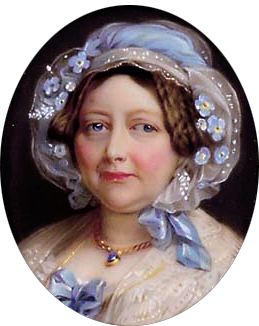 | ||
Burial 2 October 1840St George's Chapel, Windsor, England Parents George III of the United Kingdom, Charlotte of Mecklenburg-Strelitz Grandparents Frederick, Prince of Wales Cousins Louise of Mecklenburg‑Strelitz, Frederick VI of Denmark, Caroline of Brunswick, Princess Louise Auguste, Frederica of Mecklenburg‑Strelitz Similar People George III of the United Ki, Charlotte of Mecklenburg‑Strelitz, Charlotte - Princess Royal, Princess Amelia of the Unite, Princess Elizabeth of the Uni | ||
Facts and Dates of Princess Augusta Sophia of the United Kingdom
Princess Augusta Sophia of the United Kingdom (8 November 1768 – 22 September 1840) was the sixth child and second daughter of George III and Charlotte of Mecklenburg-Strelitz.
Contents
- Facts and Dates of Princess Augusta Sophia of the United Kingdom
- Childhood and adolescence
- Early adulthood
- Relationship with Brent Spencer
- Later life
- Titles and styles
- Arms
- References

Childhood and adolescence
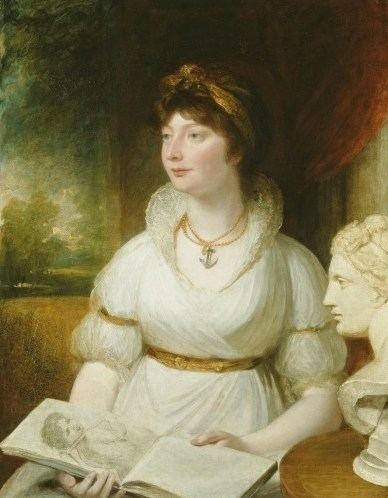
Princess Augusta Sophia was born at Buckingham House, London, the sixth child and second daughter of George III (1738–1820) and his wife Queen Charlotte. Her father so much wanted the new baby to be a girl that the doctor presiding over the labor thought fit to protest that "whoever sees those lovely Princes above stairs must be glad to have another." The King was so upset by this view he replied that "whoever sees that lovely child the Princess Royal above stairs must not wish to have the fellow to her." To the King's delight, and the Queen's relief, the baby was a small and pretty girl.
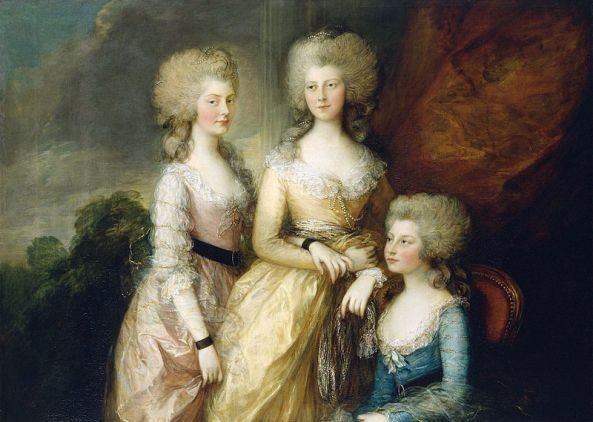
The young princess was christened on 6 December 1768, by Frederick Cornwallis, The Archbishop of Canterbury, in the Great Council Chamber at St. James's Palace. Her godparents were Prince Charles of Mecklenburg (her maternal uncle, who was visiting England), The Queen-consort of Denmark (her paternal aunt, for whom The Duchess of Ancaster and Kesteven, Mistress of the Robes to The Queen, stood proxy) and The Hereditary Duchess of Brunswick-Lüneburg (her paternal aunt, for whom The Duchess of Northumberland, Lady of the Bedchamber to The Queen, stood proxy). When only a month old, Lady Mary Coke declared her "the most beautiful infant I ever saw".
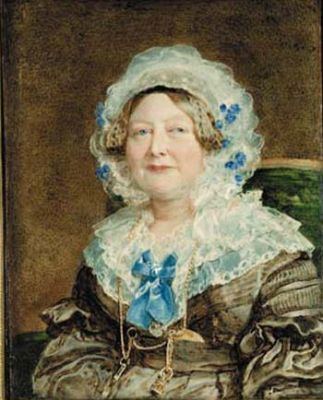
Princess Augusta was the middle of the elder trio of princesses that consisted of her, her older sister Charlotte (born 1766) and her younger sister Elizabeth (born 1770). In 1771, the two elder Princesses started traveling to Kew to take lessons under the supervision of Lady Charlotte Finch and Miss Planta. The Princesses, who had formerly been very close to their brothers now saw little of them, except when their paths crossed on daily walks. In 1774, Martha Goldsworthy, or "Gouly" became the new head of their educations. The Princesses learned typically feminine pursuits, such as deportment, music, dancing, and arts, but their mother also ensured that they learned English, French, German, Geography, and had well-educated governesses.

The young Augusta was a great favorite with Miss Planta, who called her "the handsomest of all the Princesses" though compared to her older sister, she was "childish". However, the princess was painfully shy, and stammered when in front of people she didn't know. From an early age Augusta was fixed on being good and was often upset when she did not succeed. Her behavior veered in between troublesome and well-mannered. She sometimes threw tantrums and hit her governesses, though she also often had a calm disposition and family-minded ways. She strongly disliked the political tensions that by 1780 had sprung up between her elder brothers and their parents, and preferred to occupy herself with her coin collection. As all her sisters were, Augusta was sheltered from the outside world so much that her only friends were her attendants, with whom she kept up a frequent correspondence.

In 1782, Augusta was debuted at the King's birthday celebrations. As she was still terrified of crowds, her mother did not tell her daughter about her debut until two days before it happened. Later that year, the Princess' youngest brother Alfred died, followed eight months later by her next youngest brother Octavius. When the Princesses went to see the summer exhibition in 1783 at the Royal Academy, they were so distraught by the portraits of their two youngest brothers that they broke down and cried in front of everyone. Augusta was soon a big sister again, with the birth of her youngest sibling Amelia in August 1783. She stood as a godmother, along with Charlotte and George. Though the birth of her sister did not erase the pain she felt at losing her brothers, Augusta did not dwell on their deaths as her father did.
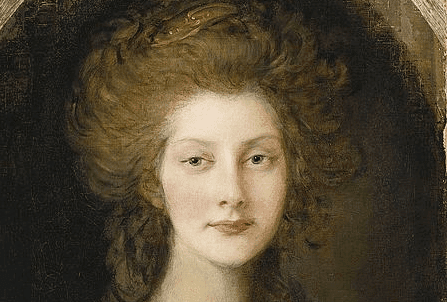
By the time they reached their teens, the three eldest Princesses were spending a great deal of time with their parents. They accompanied them to the theater, to the Opera, and to Court, and their once academic lessons began to wind down, with music and the arts becoming the new focus. They heard famous actresses such as Sarah Siddons read, and along with Charlotte and their parents, Augusta met John Adams when he was presented to the Queen. The three girls were always dressed alike at public functions, the only difference ever in their dresses being color. Though so often displayed in public, Augusta still was happiest at home, where she adored her younger brothers Ernest, Augustus, and Adolphus. She was also extremely close to her sister Elizabeth, as Charlotte was often haughty and overly conscious of her position as Princess Royal.
Early adulthood
Since they were quickly approaching a marriageable age, Augusta and the Princess Royal were given their first lady-in-waiting in July 1783. Augusta frequently wrote to her elder brother William, who was in Hanover for military training. She was a good correspondent, telling him family news and encouraging him to tell her what was happening in his life. She reveled in his attention and in the little gifts he sent her, even though the Queen tried to discourage William from taking up his sister's valuable time. Though their academic lessons were nearly over, the Queen was loath to have her daughters waste time, and made sure that the Princesses spent hours studying music or art, learning many types of specialty work from different masters.
The princesses did not "dress" until dinner, wearing morning gowns nearly all day. Even when "dressed", the Royal family often wore plain clothes, far removed from the ornate splendor of other courts. As there were six princesses, the Queen's expenses even for these clothes was enormous, and she tried to keep costs down and within the allowance she was given. Moving into this new phase of life meant that the amount of money the Queen was spending on her three eldest daughters was rapidly increasing. The Princesses constantly needed dresses, hats, trimmings, fans, and other items. The quarterly expense for their clothes was estimated to be £2000, and the expense of all their servants and tutors added to that. Yet it all paid off in one way: the Princesses were quickly becoming a familiar sight to the public. When their group portrait was exhibited to the people, it was marveled at for the porcelain impersonal beauty they displayed. They were dressed the same, and only their accessories hinted at the very different personalities that lay underneath the painted masks.
By 1785, Augusta and Charlotte were reaching an age where they could be considered as potential brides for foreign princes. In that year the Crown Prince of Denmark (later King Frederick VI) indicated to King George III that he would break off every other discussed proposal for the hand in marriage of a British princess. He was also supposed to prefer Augusta to her older sister. However, the King declared that after the horrible treatment of his younger sister by the Crown Prince's father, King Christian VII, he would never send one of his daughters to the Danish court. As their friends and ladies of the court began to get married, the princesses wondered when their turn would come. In 1797, she received a proposal from Prince Frederick Adolf of Sweden, a proposal given without the approval of the Swedish royal house. A British princess, especially from so fertile a mother, was a prize, but Augusta's father seemed increasingly unwilling to allow his daughters to marry.
Relationship with Brent Spencer
Largely denied access to personal relationships with men of their own rank, several of the daughters of George III embarked on such romances with gentleman at court. It is believed that Augusta first met Sir Brent Spencer, an Irish general in the British Army, around 1800. As Augusta later told her brother, the future George IV of the United Kingdom (then Prince Regent), the two entered into a relationship in 1803 while Spencer was stationed in Britain. Although the couple conducted their relationship with the utmost privacy, Augusta did petition the Prince Regent in 1812 to allow her to marry Spencer, promising further discretion in their behavior. While no official record of a marriage between the two exists, it was noted at the court of Hesse-Homburg at the time of her sister Elizabeth's marriage in 1818 that Augusta was "privately married." It was Spencer who informed Augusta of her mother's death later that year, and Spencer was said to be holding a locket with Augusta's picture when he died in 1828.
Later life
According to a flyer held by the V&A Archives, Princess Augusta was a patron of L. Bertolotto's flea circus.
In 1828 Augusta was heard to remark to a friend: “I was ashamed to hear myself called Princess Augusta, and never could persuade myself that I was so, as long as any of the Stuart family were alive; but after the death of Cardinal York [in 1807], I felt myself to be really Princess Augusta”.
She died on 22 September 1840 at Clarence House, St. James, London, and was buried at St George's Chapel, Windsor on 2 October, after lying in state at Frogmore.
Titles and styles
Arms
As of 1789, as a daughter of the sovereign, Augusta Sophia had use of the arms of the kingdom, differenced by a label argent of three points, the centre point bearing a rose gules, the outer points ermine.
